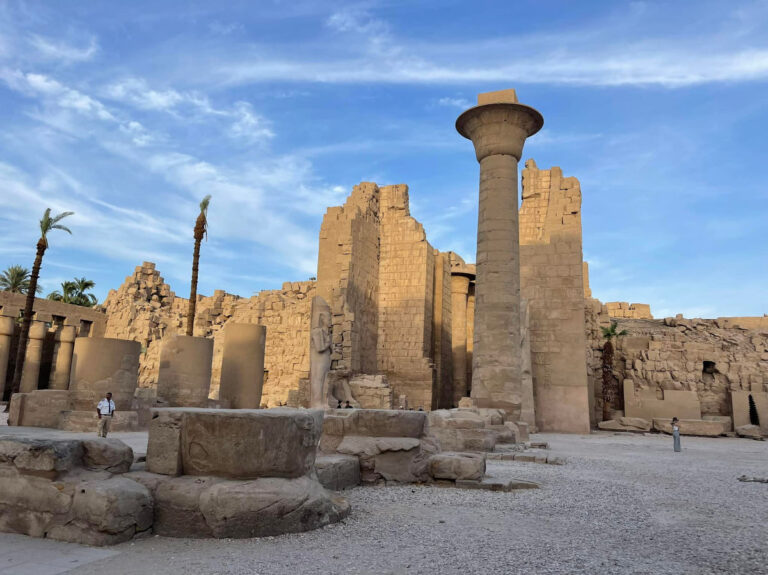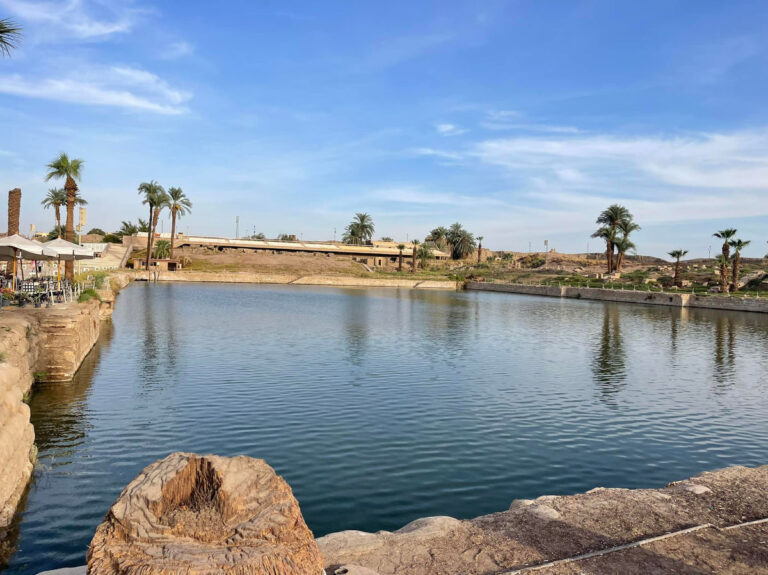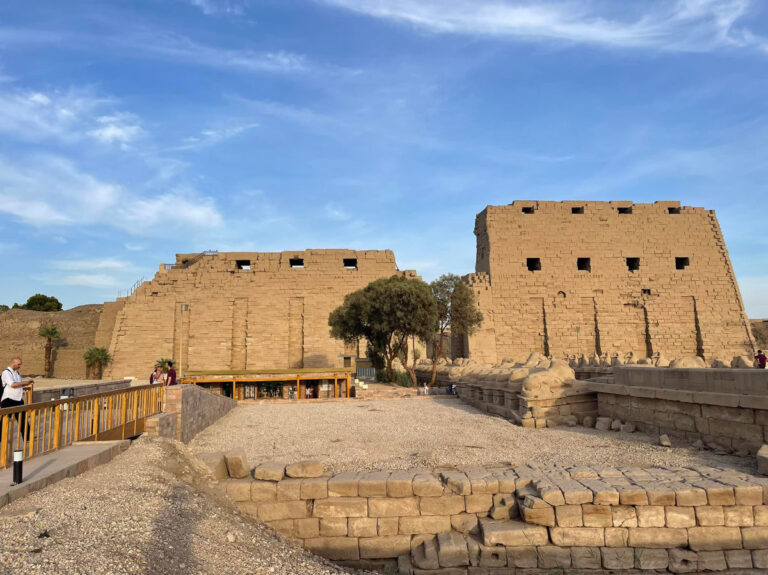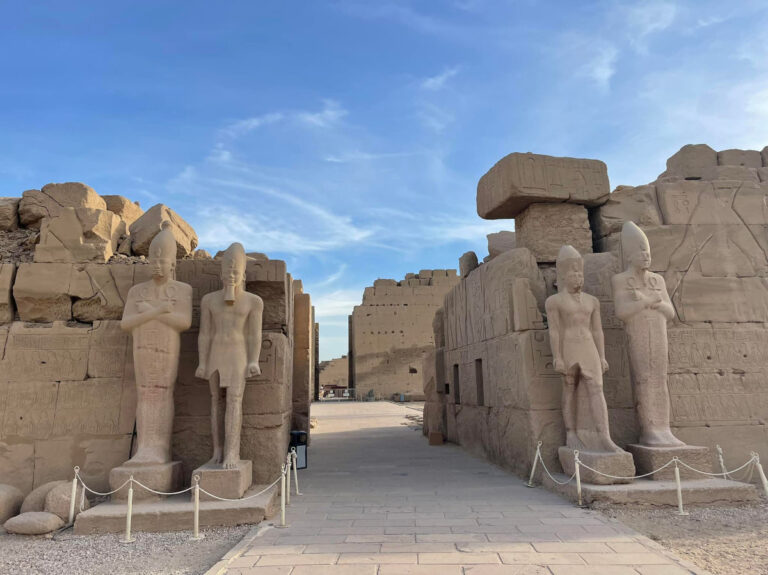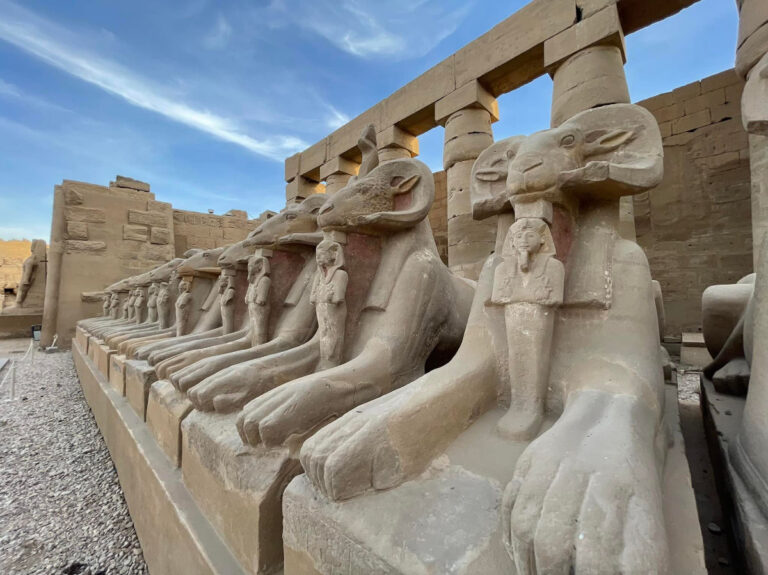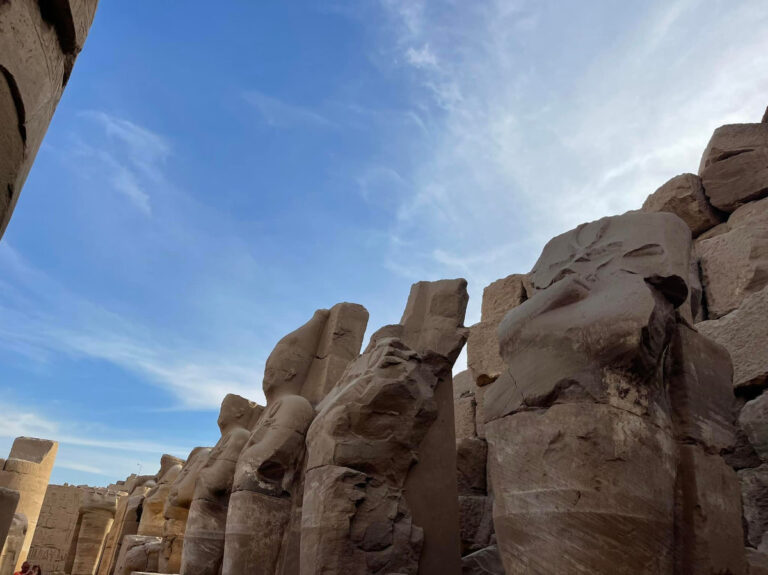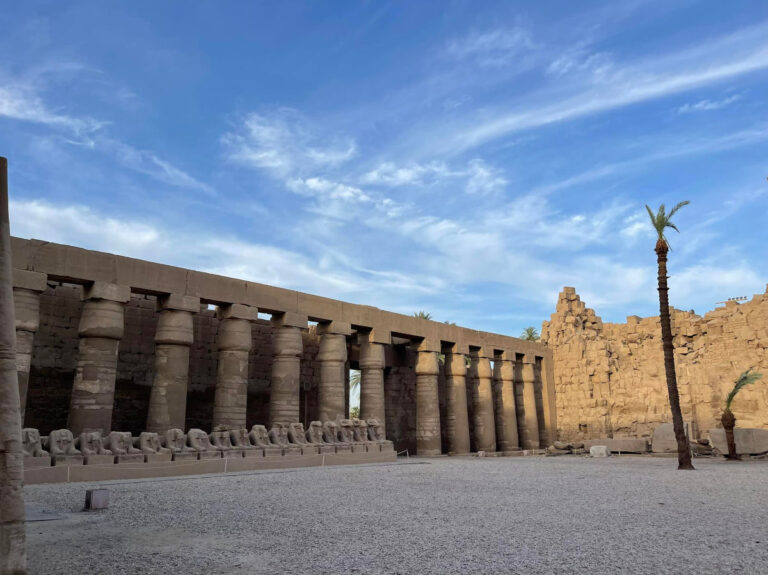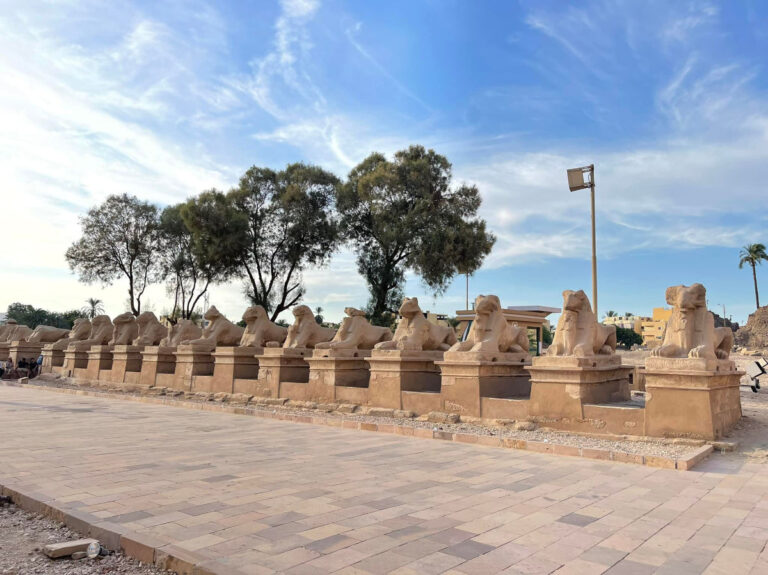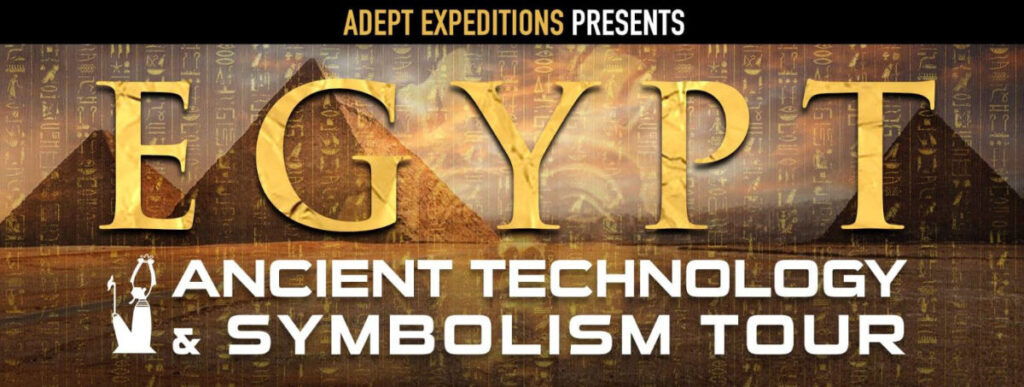
The most Complete Guide for visiting Karnak Temple

Karnak Temple
Karnak “fortified city”, called in Ancient Egypt Ipet sut, “the most revered place” is the name of a small town in Egypt, located on the eastern bank of the Nile River, north of Luxor, the area of ancient Thebes, which housed the most important religious complex of Ancient Egypt.
For centuries, this place was the most influential Egyptian religious center. The main temple was dedicated to the worship of the god Amun, but as in other Egyptian temples, other deities were also venerated.
More than four thousand years ago, Intef II, king of the 11th dynasty, began work on the temple of Amun-Re in Thebes, where the modern town of Karnak stands. It was the nucleus from which, over the next two thousand years, dozens of pharaohs were creating and remodeling one of the richest and most spectacular places of worship in ancient times, in which archaeologists have cataloged more than two hundred structures.
About thirty pharaohs contributed with their buildings, turning the complex into a complex that, due to its size (about thirty hectares), had never been known before.
Interesting Facts
- It is part of the group called Ancient Thebes with its necropolis, declared a World Heritage Site by UNESCO in 1979. It is the largest set of temples in Egypt.
- In ancient Egypt, the construction of the temples always began with the sanctuary, which means that Karnak began in the center and was completed by the entrances to the enclosure. The whole complex was richly decorated and painted in bright colors.
- After the pyramids of Giza, Karnak is the second most visited place in Egypt.
Estimated Tour time: 2 – 4 hours
Visitor 220 EGP
Student 110 EGP
Early in the morning before 10am in order to avoid tour buses with large groups.
It’s advisable to visit it first thing in the morning to avoid crowds of tourists and avoid the heat.
Karnak Video

Learn about Egypt and Luxor the Valey of the Kings Karnak Ramesseum the list goes on...
You shouldn't miss...
The Valley of the Kings
The Valley of the Kings
Luxor Temple
Medinet Habu
More about Karnak Temple
An originally modest temple
An originally modest temple, it was enlarged by the rulers from 1991 to 1668 B.C.E, but it was from 1570 to 1085 B.C.E that its remodeling and enlargement reached the character of a complex with three sections, making it one of the richest and most spectacular places of worship of antiquity, in which archaeologists have cataloged more than two hundred structures
The Karnak temple complex is made up of:
The precinct of Amun-Ra,
The Montu enclosure,
The precinct of Mut,
Khonsu Temple,
The Opet temple,
The temple of Ptah.
The sanctum sanctorum
Beyond the sanctuary of the boat, where there is now only a wasteland, the nerve center of the temple was erected: a dimly lit room, where a chapel or naos carved into a stone monolith housed the statue of Amun. It was the sanctum sanctorum, the top of the primordial hill, abode, and throne of the god, the most sacred place in the temple, which only the pharaoh or the high priest and his closest assistants could enter.
A residence of a god
Like any Egyptian temple, the sanctuary of Amun in Karnak began to be built after a long series of rituals with which it was intended to purify the space that was going to be consecrated. Keep in mind that an Egyptian temple was not a place where the people went to pray, but it was the residence of the god. For this reason, the priests are called in Egyptian hemu-netjer, “the servants of the god.”
The symbolism of Karnak
Karnak represents the newly created universe. It reflects the symbolism of the benben or primordial hill that, with creation, emerged from the waters of the Nun, the chaotic primordial ocean. Hence, at Karnak, the massive twelve-meter-high wall that surrounds the sacred space, 550 by 523 meters, is made not of horizontal courses of mud bricks, but in waves. In this way it was symbolized that the chaos (the waters of the Nun, represented by the waves) remained outside the sacred area.
The pylons are solar symbols, as they represent the two hills on the horizon (akhet) through which the sun rises. The main scene that decorates them shows the pharaoh defeating his enemies, kneeling before him; it is the triumph of order (the king) over chaos (the enemies). At Karnak, this scene appears on the seventh and eighth pylons.
Other elements of solar symbology that embellished the front of the pylons were the obelisks, authentic petrified rays, normally arranged in pairs.
In Karnak there is one almost twenty meters high, from Thutmose I (circa 1500 B.C.E.), for whose transport a 62-meter long barge was built. The second that still survives, almost thirty meters and 323 tons, is Hatshepsut’s. It took seven months of work in the Aswan quarries to extract it.
Download Karnak's Travel Guide from here:

Available on Apple Books, Kindle and Google Play Books.


